Programming Stunning Chase Effects on Moving Heads
- Programming Stunning Chase Effects on Moving Heads
- Why chase effects matter for moving head DJ lights
- Define your creative goal before programming
- Choose the right fixtures and layout for chase complexity
- Understanding DMX universes and channel allocation
- Timing, rates, and musical synchronization
- Constructing chases: simple building blocks
- Using curves and easing for natural motion
- Layering attributes and using submasters
- Practical DMX programming workflows
- Testing, debugging, and fail-safes
- Design tips to make chase effects pop in live environments
- Example chase recipes for common DJ moments
- Comparing moving head types for chase programming
- Integrating LQE products and manufacturing strengths
- LQE product lineup relevant to chase programming
- Operational best practices when using LQE moving head dj lights
- Live operation: monitoring and adapting chases on the fly
- Future-proofing your chase programming
- FAQ — Common questions about programming chase effects on moving head DJ lights
- Contact and product call to action
- Sources and references
Programming Stunning Chase Effects on Moving Heads
Why chase effects matter for moving head DJ lights
Chase effects are sequential changes in intensity, color, position, or gobo that give motion and energy to a lighting design. For live DJs, clubs, festivals, and touring acts, moving head dj lights programmed with effective chase patterns turn static cues into rhythmic visuals that sync with music and elevate the audience experience. A well-programmed chase can guide attention, emphasize musical hits, and create the illusion of larger production value without adding more fixtures.
Define your creative goal before programming
Before diving into the console, make clear creative objectives: Do you want a tight rhythmic strobe chase across the truss? A sweeping tonal wash chase across the stage? Or a complex multi-attribute chase that combines pan/tilt with color and gobo shifts? Defining intent helps you choose fixture types, DMX channels, and timing. When programming moving head dj lights, map the emotional feeling you want for each track section (intro, build, drop, outro) and document the desired energy levels and synchronization points.
Choose the right fixtures and layout for chase complexity
Different moving head types are optimized for different chase effects. Beam heads excel at razor-sharp, long-distance chases. Wash heads create broad color-moving chases across performers and backdrops. Hybrid fixtures let you combine beam, spot, and wash attributes in one chase. When programming moving head dj lights, plan your physical layout (truss runs, stage floor positions) so that pan/tilt ranges overlap and create continuous motion paths. Fixture spacing and mounting height strongly influence perceived chase speed and smoothness.
Understanding DMX universes and channel allocation
Solid DMX planning is the backbone of reliable chase programming. Each moving head uses multiple DMX channels for pan, tilt, dimmer, color, gobo, focus, and effects. Use consistent channel addressing so your chase macros and cue stacks behave predictably. For large arrays of moving head dj lights, segregate fixtures across DMX universes to avoid saturating a single universe and to simplify programming backups. Label channels in your console and maintain a channel map to make on-the-fly adjustments painless.
Timing, rates, and musical synchronization
Chases rely on timing to feel right. Decide whether your chase will be tempo-synced to BPM or run free at fixed rates. Many modern desks and fixtures support MIDI or Ableton Link sync to tie chase speed to music. For DJ shows, sync to the track tempo for tight interplay with beats; use subdivisions (1/2, 1/4, 1/8) to craft variations. When tempo sync isn't available, use beat markers or tap-tempo on the console. Remember that rapid pan/tilt motion perceived as smooth requires higher refresh/update rates and acceleration curves to avoid jerky motion on moving head dj lights.
Constructing chases: simple building blocks
Start chases with simple building blocks and layer complexity: step chases (fixture-to-fixture on/off), gradient chases (progressive dimming), rotation chases (pan/tilt sweeps), and attribute chases (color/gobo swaps). Use a matrix or fixture group to program a step chase across 8 or 16 positions, then duplicate with offset timing to create running waves. For moving head dj lights, offsetting attributes (color changed one step after position) produces a richer, more organic feel than changing everything simultaneously.
Using curves and easing for natural motion
Instant linear movement can look mechanical. Apply easing curves (slow-in/slow-out) to pan/tilt to emulate natural motion, especially for wide sweeps in moving head dj lights. Many consoles allow separate speed envelopes for pan and tilt; using slightly different curves for each axis avoids robotic symmetry and produces more cinematic sweeps. Similarly, apply fade curves to dimmer and color to make attribute transitions musical rather than abrupt.
Layering attributes and using submasters
Layer multiple attribute chases using submasters, palettes, or layers so you can mix and mute elements live. For example, have a position chase on a playback fader and overlay a color chase on a separate fader. This allows a lighting operator to drop in or blend additional intensity or color energy at key moments without reprogramming. For club nights with moving head dj lights, this live control is invaluable for reacting to the crowd.
Practical DMX programming workflows
Adopt a repeatable workflow: patch fixtures with clear naming, create palettes for key attributes (positions, gobos, colors), build effects using fixture groups, store chases in cue lists or sequences, and test at performance intensities. When programming moving head dj lights, save versioned show files and document major cues in a show sheet. If possible, record backups on a USB stick and to cloud storage so you can restore quickly on venue consoles or when swapping rigs.
Testing, debugging, and fail-safes
Test chases at rigging height and performance intensity. Check for physical collisions in pan/tilt sweeps and for undesirable wash overlap or blind spots. Confirm DMX cabling and signal integrity: use terminators and inspect connectors. Program a safe default “panic” or blackout cue that can be instantly triggered if something goes wrong. For touring rigs that use many moving head dj lights, label cables and maintain an inventory to expedite troubleshooting.
Design tips to make chase effects pop in live environments
Contrast, negative space, and rhythm make chases readable. Use dark periods between chase bursts to increase impact. Combine narrow-beam fixtures for cut-through aerial effects with wider wash chases to illuminate performers. Use color contrast (warm vs. cool) to separate layers and ensure chase movement remains visible under haze or fog. When programming moving head dj lights for camera broadcast, remember that camera exposure can clip intense beams — test with cameras on-site to balance intensity and color for both live audience and broadcast capture.
Example chase recipes for common DJ moments
Here are concise chase recipes tailored for moving head dj lights. Each recipe lists attributes and suggested timing:
- Build (30–60s): Slow gradient color wash across stage with 8s pan sweeps, color changes on 2 bar phrases.
- Drop (8–16 bars): Tight step chase on beam fixtures at 1/8 beat subdivisions, white center strobes on downbeats, short shutter cuts.
- Breakdown: Slow rotating gobos with soft color fade, pan/tilt easing for cinematic movement.
Comparing moving head types for chase programming
Below is a quick comparison of common moving head types and how they relate to chase programming. Use this when choosing fixtures or designing a rig for moving head dj lights:
| Fixture Type | Best Use in Chase | Key Attributes | Typical LQE Product |
|---|---|---|---|
| Beam Moving Head | Sharp aerial chases, long-distance running patterns | Narrow beam, high intensity, precise framing | Beam moving head light |
| Moving Head Wash | Color sweeps and large area washes with soft edges | Wide beam, color mixing, even coverage | Moving head wash light |
| Moving Head Hybrid | Versatile chases combining beam and wash elements | Multi-mode optics, gobos, zoom | Moving head hybrid light |
| Moving Head Profile | Gobo-driven chases and sharp image projections | Framing shutters, focus, high CRI options | Moving head profile light |
Integrating LQE products and manufacturing strengths
LQE was founded in 2008 and is headquartered in Foshan, China. We are a professional OEM/ODM stage lighting equipment manufacturer specializing in the R&D, production, and sales of middle- and high-end digital stage lighting. Our production base covers an area of about 10,000 square meters, has the ability to produce 100,000 lighting fixtures annually, and has 80 national patents. Our range of stage lighting equipment is diverse, including various moving head lights and static lights, suitable for applications in theaters, music concert stages, studios, broadcasting, religious spaces, exhibitions, nightclubs, leisure venues, theme parks, and more.
LQE product lineup relevant to chase programming
For programmers working with moving head dj lights, LQE offers a comprehensive set of fixtures and accessories that support creative chase design and robust touring demands. Core products include:
- Waterproof stage lighting — for outdoor chases and festivals where weather resistance is required.
- Beam moving head light — high-intensity beams for aerial chase effects.
- Moving head hybrid light — multi-purpose fixtures for combined beam/wash chases.
- Moving head wash light — for broad, color-driven chase patterns.
- Moving head profile light — for gobo and projection-based chases.
- LED effect light, LED studio light, LED par light — supplemental fixtures to add layers and texture.
- Lighting accessories — rigging, DMX splitters, and flightcases to keep moving head dj lights secure and reliable.
Core competitive advantages of LQE include high manufacturing capacity, patented technologies, and a focus on middle- to high-end digital lighting that balances performance with cost-effectiveness. These factors make LQE fixtures well-suited to professional chase programming workflows, whether for fixed installations or touring rigs.
Operational best practices when using LQE moving head dj lights
Maximize uptime and consistency by following these routines: firmware management (keep fixtures updated), standardize DMX personalities across shows, maintain a turnaround checklist for touring rigs (clean lenses, check fans), and use protective flightcases for transport. LQE’s production scale and warranty support make it practical to standardize on similar fixture families across a rig to simplify chase programming and replacement in the field.
Live operation: monitoring and adapting chases on the fly
During live events, monitor chases for visibility under changing stage conditions (crowd lighting, pyrotechnics, haze density). Use master intensity faders and effect rate masters to globally adjust chase energy. Have a set of pre-programmed alternate chases (reduced intensity, color-muted, or blackout-safe) to switch quickly if the musical dynamics or venue rules change. For high-profile DJ events, rehearse transitions with the DJ to ensure cues line up with mixes.
Future-proofing your chase programming
As fixtures gain more onboard intelligence (networked protocols like sACN, Art-Net, RDM), design chase systems that leverage remote diagnostics and color calibration. Build fixture palettes and templates that can transfer across consoles or be re-imported to new hardware. Investing time into standardized naming, documented cue lists, and modular chase building blocks reduces programming time for future shows and makes it easier to scale or replace moving head dj lights without redoing programming from scratch.
FAQ — Common questions about programming chase effects on moving head DJ lights
Q1: How do I sync chases to the DJ’s BPM?
A: Use a lighting console or software that supports MIDI clock, Ableton Link, or tap-tempo. Map your chase rate to the tempo or subdivisions. Test synchronization during rehearsals and allow manual rate tweaks for live adjustments.
Q2: What is the ideal number of steps for a chase?
A: There’s no single ideal number — use more steps for smooth traveling waves (8–16 steps) and fewer for punchy, strobe-like effects (4–8 steps). Consider fixture count and spacing: tightly spaced fixtures may require more steps to create perceived motion.
Q3: Can I mix beam and wash fixtures in the same chase?
A: Yes. Use separate layers or submasters for beam and wash attributes so you can control their relative intensities and timing independently. Hybrid fixtures can simplify this by switching modes as needed.
Q4: How do I prevent fixture collisions when programming aggressive sweeps?
A: Always test full-motion sweeps during rigging and programming. Use software that simulates pan/tilt movement or physically limit movement ranges if possible. Leave mechanical buffers between fixtures’ movement arcs on trusses.
Q5: What console features speed up chase programming?
A: Palettes for colors/positions/gobos, effects engines with offset timing, groups/matrices, and robust cue list management systems all cut programming time. Look for consoles with easy copy/paste and macro capabilities.
Contact and product call to action
If you want to evaluate fixtures for your next show or need programming consultancy for moving head dj lights, contact LQE’s sales and technical team to discuss specifications, sample testing, or OEM/ODM options. View product catalogs or request a quote to match fixture types and quantities to your venue and creative goals. Our team can help you select the right combination of beam, wash, hybrid, and profile fixtures and provide advice for DMX layout and chase programming workflows.
Sources and references
- LQE company information and manufacturing data — provided by LQE (company data supplied in brief).
- DMX512 standard and lighting control best practices — ESTA / USITT DMX512 documentation and industry guidelines.
- Solid-state lighting and LED efficiency considerations — U.S. Department of Energy, Solid-State Lighting Program.
How to Choose the moving head light manufacturer and supplier in us?
Top led moving head wash light Manufacturers and Suppliers
How to Choose the theater stage lights manufacturer and supplier in us?
Tips for buy stage lighting spotlights
Distributor
What support does LQE offer to its distributors?
We provide our distributors with a full package of support, including:
Marketing materials and product catalogs
Technical training and manuals
Fast-response after-sales service
Exclusive regional pricing and policies (for qualified partners)
Priority access to new products and updates
What is your typical lead time for distributor orders?
Our standard production lead time is 15–30 working days depending on order volume and customization requirements. For stocked models or repeat orders, we can offer shorter delivery times.
Can LQE help with product training and technical guidance?
Absolutely. We offer remote training sessions, user manuals, installation guides, and continuous technical support to help your team understand and sell our products with confidence.
1000w
Do You Supply After-Sale Service?
LQE lighting offers 7x24 hrs systematic SOP customer support with dedicated personnel, ensuring quick and comprehensive assistance for stage lighting needs.
What Is the Warranty Offered by LQE Lighting?
LQE lighting offers a comprehensive 1-year warranty and spare parts on its products, giving customers peace of mind and investment protection.

LED Moving Head Stage Wash Light LW200Z
The versatile moving head stage light provides a powerful lighting solution for theaters, concerts, and large outdoor performances. Suitable for theaters, TV stations, entertainment stages, and large outdoor performance scenes.
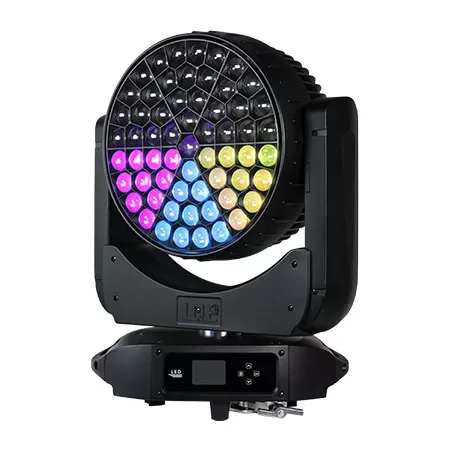
1000w 61x40w RGBW Stage Moving Head Wash Light LW1000
1000W 61x40W LED RGBW Mulichips Moving Head Wash Lights with Zoom (5°–50°), Covering Large Range and Long Distance. Designed to deliver a 5°–50° ultra-large zoom range to achieve a greater wash effect, illuminating stages and events with stunning lighting effects.
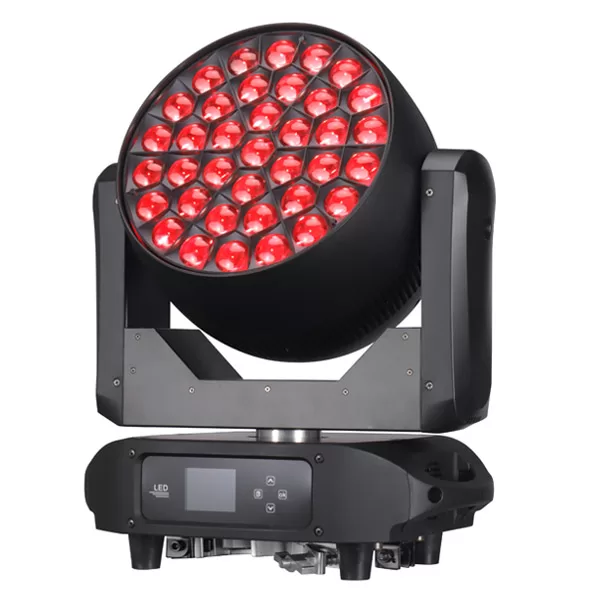
800w 37x40w RGBW Stage Moving Head Wash Light LW800
800W 37x40W LED RGBW Mulichips Moving Head Wash Lights with Zoom (5°-50°), Covering Large Range and Long Distance. Designed to deliver a 5°–50° ultra-large zoom range to achieve a greater wash effect, illuminating stages and events with stunning ring control lighting effects.

600w 19x40w RGBW Stage Moving Head Wash Light LW600 Zoom IP20
600W 19x40W LED RGBW Mulichips Moving Head Wash Lights with Zoom (5°–50°), Covering Large Range and Long Distance. IP20: Designed to deliver a 5°–50° ultra-large zoom range to achieve a greater wash effect, illuminating stages and events with stunning ring control lighting effects.

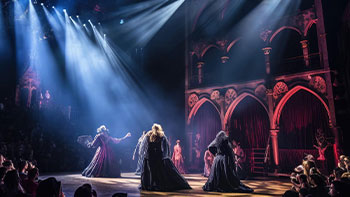
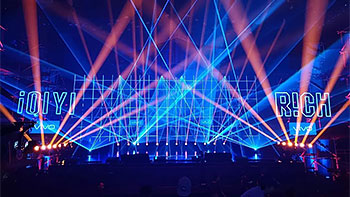

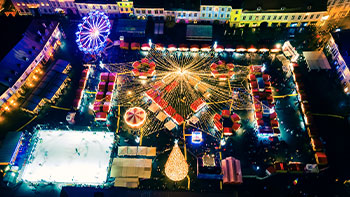








Linkedin
YouTube
Whatsapp: +8618924548390
TikTok